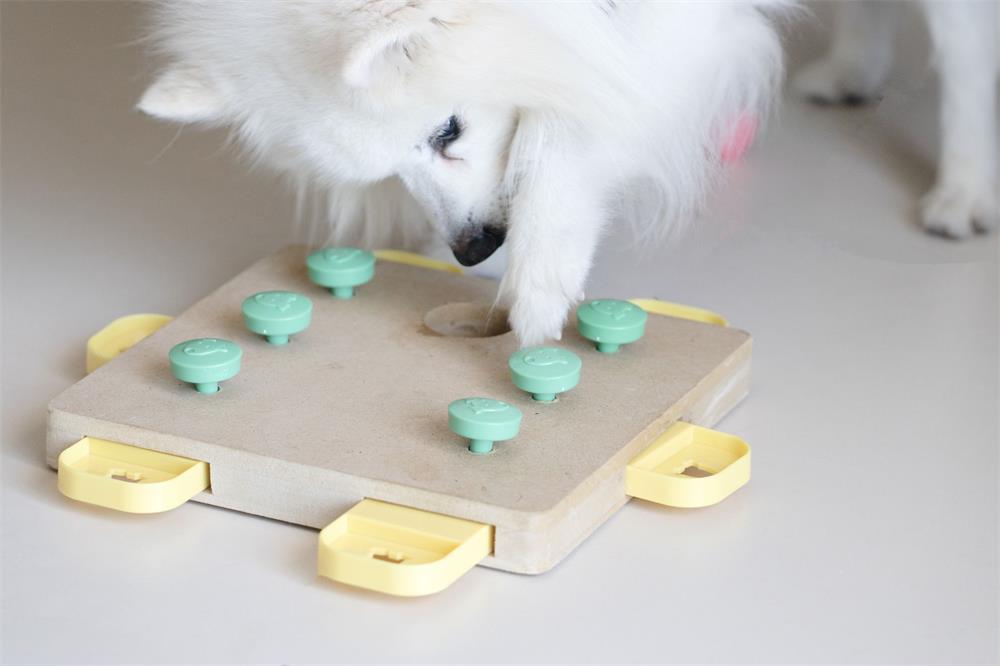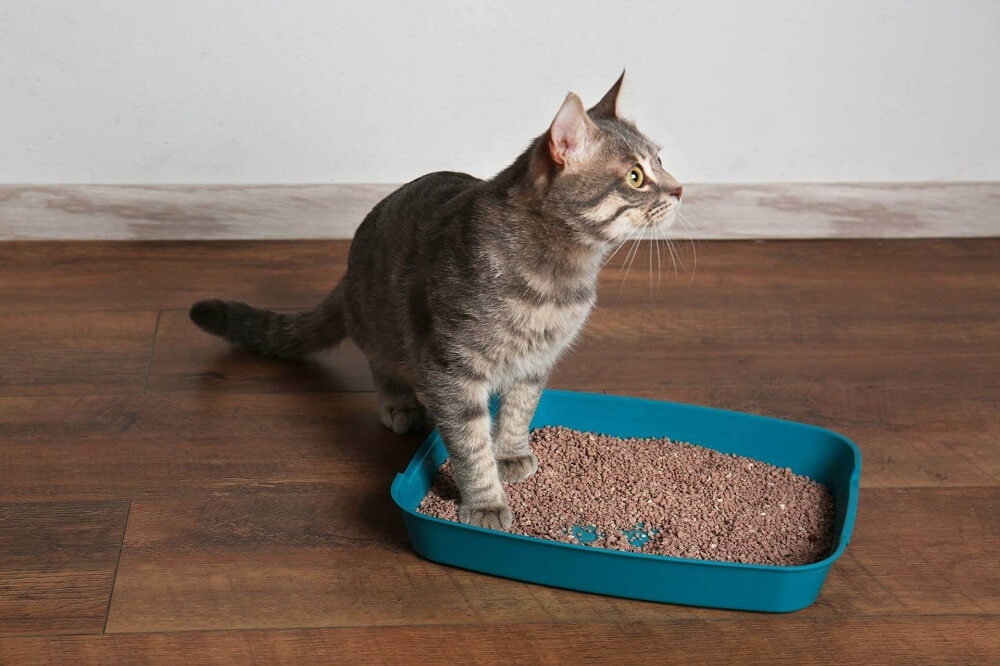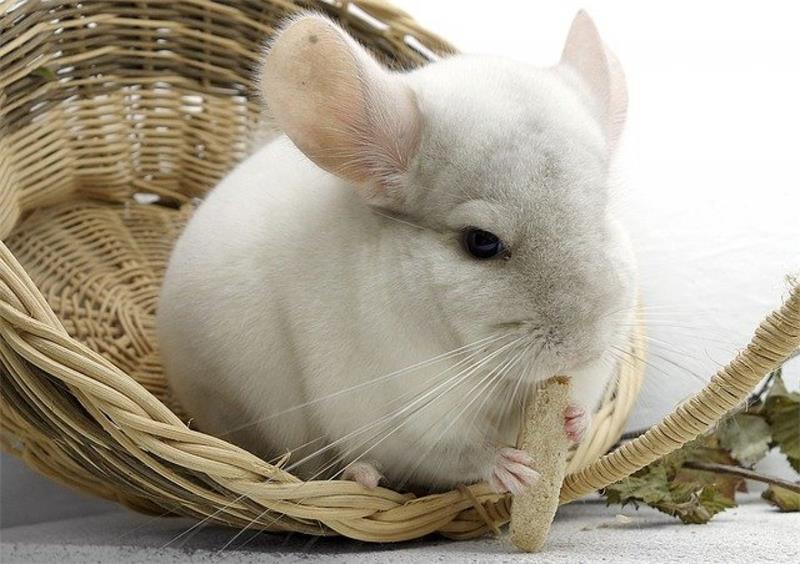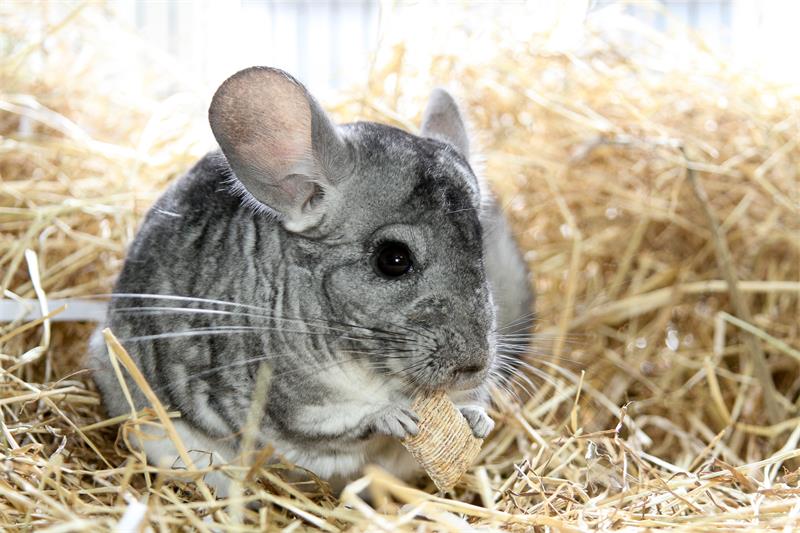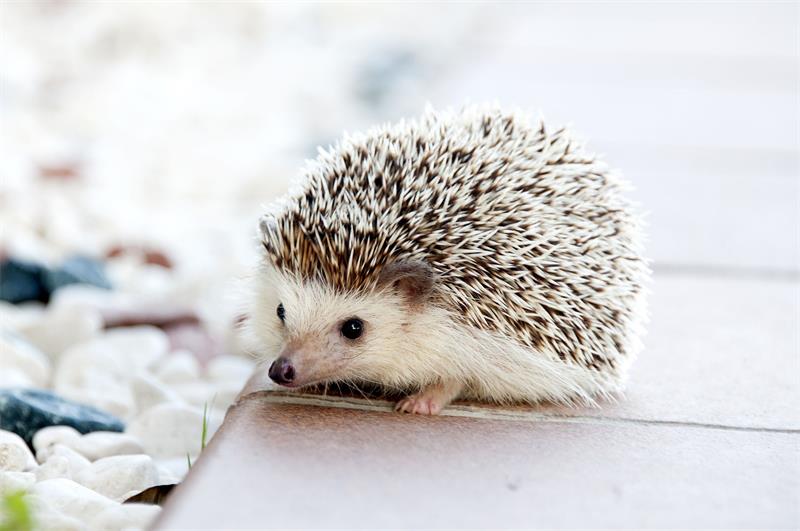
Table of Contents
Hedgehogs are unique and adorable animals that can make wonderful pets for people who are willing to learn about their special needs and provide them with proper care. Hedgehogs are not rodents, but belong to a group of mammals called insectivores. They have a distinctive feature of having quills, which are modified hairs that can be raised when they feel threatened or scared. Hedgehogs are mostly nocturnal, meaning they are active at night and sleep during the day. They can live up to 10 years in captivity, but the average lifespan is around five years.
If you are interested in owning a hedgehog as a pet, you will need to know how to create a comfortable and stimulating environment for your hedgehog, what to feed it, how to handle it and how to socialize it with other animals or humans. In this article, we will cover these topics and provide you with some basic tips and guidelines for hedgehog care.
Creating a Comfortable and Stimulating Environment for Your Hedgehog
Hedgehogs need a spacious and secure cage that can accommodate their natural behaviors and activities. The cage should be at least 2 feet by 3 feet in size, with solid walls and a solid bottom. Wire cages with grates or bars can injure your hedgehog’s feet or allow it to escape. The cage should have a lid or a cover to prevent your hedgehog from climbing out or other animals from getting in.
The cage should be placed in a quiet and well-ventilated area of your home, away from direct sunlight, drafts, loud noises or strong smells. The ideal temperature range for hedgehogs is between 72°F and 80°F (22°C and 27°C). Temperatures below 70°F (21°C) can cause your hedgehog to go into hibernation, which can be fatal for domesticated hedgehogs. Temperatures above 85°F (29°C) can cause your hedgehog to overheat and suffer from heat stroke. You can use a thermometer to monitor the temperature in your hedgehog’s cage and adjust it accordingly with heating pads, lamps, fans or air conditioners.
The cage should be lined with soft and absorbent bedding that is safe for your hedgehog. Avoid using cedar or pine shavings, as they can cause respiratory problems or skin irritation for your hedgehog. You can use recycled paper bedding, fleece blankets, towels or newspaper as bedding materials. You will need to change the bedding at least once a week or more often if it becomes soiled or wet.
The cage should also contain some essential items for your hedgehog’s comfort and enrichment. These include:
- A hide box or a sleeping bag where your hedgehog can curl up and sleep during the day. You can use a cardboard box, a plastic container, a fabric pouch or a commercial hedgehog house as a hide box. Make sure the hide box has an entrance that is large enough for your hedgehog to get in and out easily.
- A food bowl and a water bottle where your hedgehog can access fresh food and water at all times. You can use ceramic or stainless steel bowls that are heavy enough to prevent tipping over. You can use a glass or plastic water bottle that attaches to the side of the cage with a metal spout. Make sure the food bowl and the water bottle are cleaned daily and refilled as needed.
- A running wheel where your hedgehog can exercise and burn off energy at night. You can use a solid plastic wheel that is at least 12 inches in diameter and has no gaps or holes where your hedgehog’s feet or quills can get stuck. You can also use a metal wheel that is coated with plastic or rubber to prevent rusting or injury. Make sure the wheel is stable and secure in the cage and does not make too much noise when your hedgehog runs on it.
- Some toys and treats where your hedgehog can play and have fun. You can use various items such as cardboard tubes, plastic balls, stuffed animals, cat toys, chew sticks, dried fruits, nuts or insects as toys and treats for your hedgehog. Make sure the toys and treats are safe for your hedgehog and do not pose any choking or swallowing hazards. You can also rotate the toys and treats every few days to keep your hedgehog interested and stimulated. You can also hide some of the treats in different places in the cage or around the room to encourage your hedgehog to explore and forage. Your hedgehog will appreciate having some fun and variety in its daily routine.
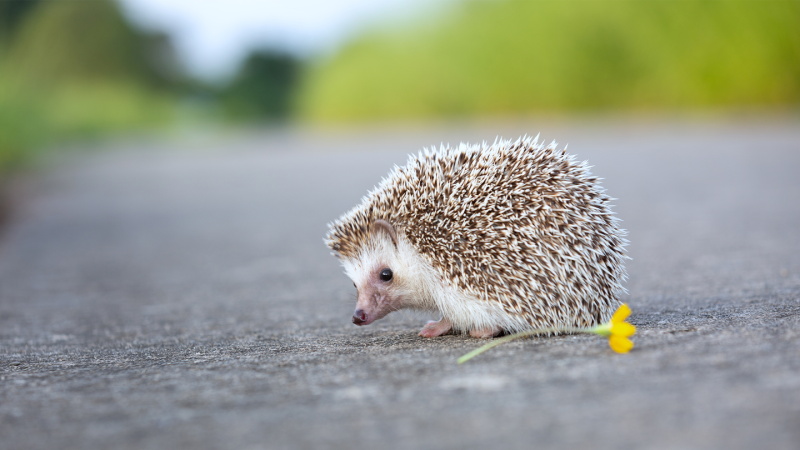
Feeding Your Hedgehog a Balanced and Nutritious Diet
Hedgehogs are omnivorous animals, meaning they can eat both animal and plant matter. However, their natural diet consists mainly of insects and other small invertebrates, which provide them with protein and chitin. Protein is essential for your hedgehog’s growth, development and maintenance of muscles and organs. Chitin is a substance found in the exoskeletons of insects, which helps your hedgehog digest food and maintain healthy skin and quills.
Therefore, the main food you should feed your hedgehog is high-quality kibble that is specially formulated for hedgehogs or for cats. These kibbles should contain at least 30% protein and less than 20% fat. You can find these kibbles in pet stores or online. You should avoid kibbles that contain artificial colors, flavors, preservatives or fillers. You should also avoid kibbles that contain too much fiber, as this can cause digestive problems for your hedgehog.
You should feed your hedgehog about one to two tablespoons of kibble per day, depending on its size and activity level. You can adjust the amount as needed to prevent obesity or malnutrition. You should offer the kibble in the evening, when your hedgehog is most active and hungry. You should remove any uneaten kibble in the morning to prevent spoilage.
In addition to kibble, you should also supplement your hedgehog’s diet with some live or freeze-dried insects, such as mealworms, crickets or waxworms. These insects provide your hedgehog with extra protein and chitin, as well as mental stimulation and fun. You can offer about 10 to 15 insects per day as treats or snacks for your hedgehog. You can also gut-load the insects before feeding them to your hedgehog, which means feeding them nutritious foods such as fruits, vegetables or grains. This way, your hedgehog will get more vitamins and minerals from the insects.
You can also offer your hedgehog some fresh fruits and vegetables as occasional treats or snacks. These foods provide your hedgehog with vitamins, minerals, antioxidants and water. However, you should only offer small amounts of fruits and vegetables, as they are high in sugar and can cause dental problems or diarrhea for your hedgehog. You should also avoid fruits and vegetables that are acidic, starchy or gassy, such as citrus fruits, grapes, raisins, corn, potatoes or beans. Some examples of fruits and vegetables that are safe for your hedgehog are apples, bananas, berries, melons, tomatoes, green beans and cooked squash.
Other foods that you can offer your hedgehog as treats or snacks are cooked meat, cooked eggs or pinky mice. These foods provide your hedgehog with protein and other nutrients. However, you should only offer these foods sparingly, as they are high in fat and can cause obesity or health problems for your hedgehog. You should also make sure that these foods are cooked well and do not contain any bones, salt, spices or sauces.
You should always provide your hedgehog with fresh and clean water at all times. You can use a water bottle that attaches to the side of the cage with a metal spout. You should avoid using a water bowl, as it can get dirty easily or tip over. You should also avoid giving your hedgehog milk or juice, as they can cause digestive problems or dehydration for your hedgehog.
You should always monitor your hedgehog’s food intake and weight regularly to ensure that it is eating well and staying healthy. You can use a kitchen scale to weigh your hedgehog once a week and keep a record of its weight. A healthy adult hedgehog should weigh between 250 to 500 grams (8 to 18 ounces). If you notice any significant changes in your hedgehog’s weight or appetite, you should consult your veterinarian for advice.
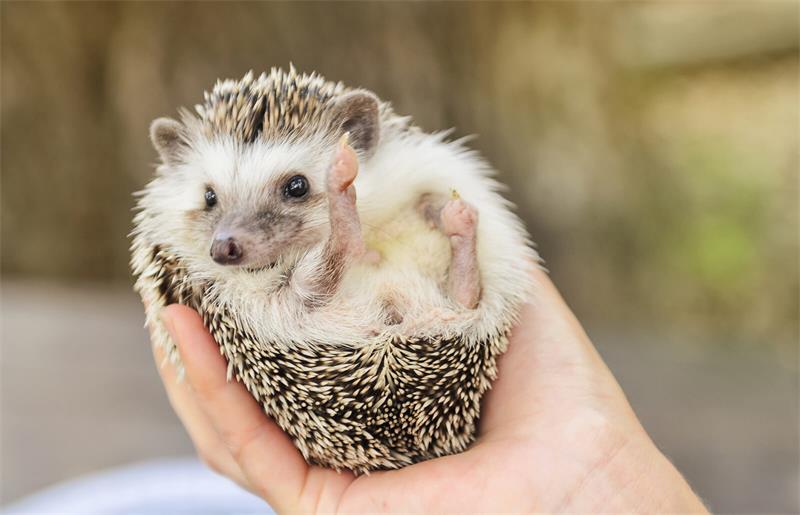
Handling Your Hedgehog with Care and Confidence
Hedgehogs are shy and defensive animals by nature, so they may not be very eager to be handled by humans at first. However, with patience and gentle handling, you can bond with your hedgehog and make it feel comfortable and safe in your hands. Handling your hedgehog regularly will also help you monitor its health and behavior.
To handle your hedgehog properly, you should follow these steps:
- Wash your hands with a mild soap that does not have a strong or fruity smell. Hedgehogs have a keen sense of smell and may bite or avoid your hands if they smell like food or something unfamiliar.
- Approach your hedgehog calmly and quietly, especially if it is sleeping or resting. Hedgehogs have poor eyesight and may get startled by sudden movements or noises. You can also talk to your hedgehog softly to let it know you are there.
- Scoop up your hedgehog gently from underneath with both hands. You should feel its fur on its belly and avoid the quills on its back. Do not grab your hedgehog from above or behind, as this may make it feel threatened and curl up into a ball. Do not use gloves or a towel to pick up your hedgehog, as this may confuse or scare it. You want your hedgehog to recognize your scent and touch.
- Hold your hedgehog securely but gently in one hand or on your lap. You can use your other hand to support its back or cover it lightly for extra security. Keep your fingers together and away from its belly in case it rolls into a ball. Do not squeeze or shake your hedgehog, as this may hurt or stress it.
- Wait for your hedgehog to unroll from its ball if it does so. Do not force it to unroll or poke it with your fingers. Be patient and offer it some treats such as mealworms or crickets as soon as it unrolls. This will reward your hedgehog for being brave and associate being handled with something positive.
- Let your hedgehog explore your hands and lap at its own pace. Do not try to pet or stroke your hedgehog until it relaxes and lays down its quills. A relaxed hedgehog will have its quills flat and smooth on its back, not raised or pointing in different directions like when it is curled up. You can then gently pet your hedgehog in the direction of its quills, starting from its head and moving towards its tail. Avoid touching its face, ears or feet, as these are sensitive areas that most hedgehogs do not like to be touched.
- Put your hedgehog back in its cage when you are done handling it or when it shows signs of being tired or stressed. Signs of stress include huffing, hissing, biting, shaking, drooling, green poop or curling up into a ball repeatedly. To put your hedgehog back in its cage, simply lower it gently onto the bedding and let it walk off your hand.
Some tips for handling your hedgehog are:
- Handle your hedgehog for at least 30 minutes a day, preferably in the evening when it is most active and awake. This will help you bond with your hedgehog and keep it socialized and happy.
- Handle your hedgehog in a quiet and comfortable area of your home, away from other pets, children or distractions. This will help your hedgehog feel safe and relaxed in your presence.
- Handle your hedgehog when it is in a good mood and not hungry, thirsty, cold or hot. This will make your hedgehog more receptive and cooperative to being handled.
- Handle your hedgehog gently and confidently, without being afraid of getting poked by its quills. Hedgehogs can sense fear and hesitation in humans and may react accordingly. Remember that hedgehogs do not have barbed quills like porcupines, so they cannot shoot them out or stick them into you. The quills are only sharp at the tips and can be easily avoided by handling your hedgehog from underneath.
- Handle your new hedgehog gradually and consistently, starting from the day you bring it home. Do not wait for a few days to let it settle in before handling it, as this may make it more fearful and distrustful of you. Instead, handle it every day for short periods of time at first, then gradually increase the duration and frequency of handling as it gets used to you.

Socializing Your Hedgehog with Other Animals or Humans
Hedgehogs are not social animals by nature. In the wild, they only socialize when it is mating season. Domesticated hedgehogs live solitary lives and do not like interacting with humans, pets or other hedgehogs. Breeders usually socialize with hedgehogs from an early age, but they still prefer to be alone.
However, this does not mean that hedgehogs cannot be socialized at all. With patience and consistent handling, hedgehogs can be socialized to be more friendly and outgoing with their owners and other animals or humans. Socializing your hedgehog will also help it cope better with stress and new situations.
To socialize your hedgehog with other animals or humans, you should follow these steps:
- Choose a suitable animal or human to introduce your hedgehog to. Not all animals or humans are compatible with hedgehogs. You should avoid animals or humans that are loud, aggressive, predatory or allergic to hedgehogs. You should also avoid animals or humans that are too young, too old or too fragile to handle a hedgehog safely and gently. Some examples of suitable animals or humans are calm dogs, cats, rabbits, guinea pigs, hamsters or children over 10 years old.
- Introduce your hedgehog gradually and carefully to the animal or human. Do not force your hedgehog to interact with the animal or human if it does not want to. Let your hedgehog sniff and explore the animal or human at its own pace. You can also offer some treats to both parties to encourage positive association. You should always supervise the interaction and intervene if there is any sign of aggression, fear or discomfort from either side.
- Repeat the introduction regularly and increase the duration and frequency of interaction as your hedgehog gets more comfortable and confident with the animal or human. You can also try different settings and activities to enrich the interaction and make it more fun for both parties. For example, you can let your hedgehog and the animal or human play with some toys, explore a playpen or cuddle on a couch.
- Respect your hedgehog’s limits and preferences when it comes to socializing with other animals or humans. Some hedgehogs may never enjoy socializing with other animals or humans, while others may only tolerate certain animals or humans. You should not force your hedgehog to socialize with anyone it does not like or trust. You should also give your hedgehog enough space and time to be alone when it needs to.
Some tips for socializing your hedgehog are:
- Socialize your hedgehog from a young age, preferably before 12 weeks old. This is when your hedgehog is most receptive and adaptable to new experiences and stimuli. Older hedgehogs may be more resistant and difficult to socialize.
- Socialize your hedgehog in a quiet and comfortable area of your home, away from other distractions or stressors. This will help your hedgehog feel safe and relaxed during the socialization process.
- Socialize your hedgehog when it is in a good mood and not hungry, thirsty, cold or hot. This will make your hedgehog more receptive and cooperative to socializing with other animals or humans.
- Socialize your hedgehog gently and confidently, without being afraid of getting poked by its quills. Hedgehogs can sense fear and hesitation in humans and may react accordingly. Remember that hedgehogs do not have barbed quills like porcupines, so they cannot shoot them out or stick them into you. The quills are only sharp at the tips and can be easily avoided by handling your hedgehog from underneath.
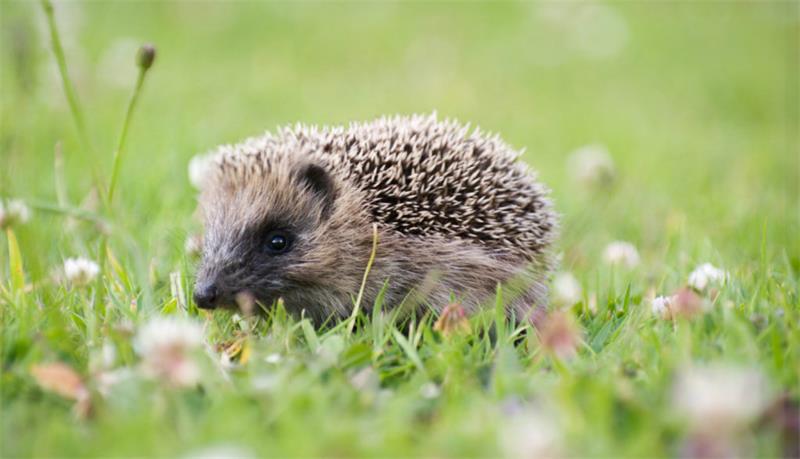
Tips for Hedgehog Care
Hedgehogs are exotic and fascinating animals that require special care and attention. To keep your hedgehog healthy and happy, you should follow these tips:
- Feed your hedgehog a well-balanced, high-protein diet with plenty of veggie and fruit treats. You can buy or make your hedgehog an enclosure that is at least 2 ft by 4 ft (0.61 m by 1.22 m). The enclosure should have a hide box, a food bowl, a water bottle, a running wheel and some toys.
- Clean your hedgehog’s cage regularly, at least once a week, with odorless or weakly odored products. The bedding in the cage can be made from recycled paper, fleece, towels or newspaper. You should change the bedding whenever it becomes soiled or wet.
- Bathe your hedgehog at least once a month, using mild shampoo and warm water. You can use a small tub or a sink to bathe your hedgehog. You should avoid getting water in its ears or eyes. You should also dry your hedgehog thoroughly with a towel or a hair dryer on a low setting.
- Trim your hedgehog’s nails weekly, using cat clippers or pet nail trimmers. If you are not comfortable with this task, you can have a veterinary technician do it for you. You should avoid cutting the quick, which is the pink part of the nail that contains blood vessels and nerves. If you accidentally cut the quick, you can use styptic powder or cornstarch to stop the bleeding.
- Play and snuggle with your hedgehog for at least 30 minutes every day, preferably in the evening when it is most active and awake. This will help you bond with your hedgehog and keep it socialized and happy. You can also offer some treats to your hedgehog during playtime, such as mealworms, crickets or dried fruits.
- Respect your hedgehog’s nocturnal lifestyle and do not disturb it during the day when it is sleeping. Hedgehogs are sensitive to light and noise and may become stressed or depressed if they are exposed to too much of them. You can use a red light bulb or a night light to observe your hedgehog at night without disturbing it.
- Keep your hedgehog warm and comfortable by maintaining the temperature in its cage between 72°F and 80°F (22°C and 27°C). You can use a thermometer to monitor the temperature in your hedgehog’s cage and adjust it accordingly with heating pads, lamps, fans or air conditioners. You should avoid temperatures below 70°F (21°C) or above 85°F (29°C), as they can cause your hedgehog to go into hibernation or heat stroke, which can be fatal for domesticated hedgehogs.
- Monitor your hedgehog’s health and behavior regularly and consult your veterinarian if you notice any signs of illness or injury. Some common signs of illness or injury in hedgehogs are loss of appetite, weight loss, lethargy, diarrhea, vomiting, sneezing, coughing, wheezing, bleeding, swelling, limping, bald patches, quill loss, skin infections or parasites. You should also take your hedgehog to the veterinarian for regular check-ups and vaccinations.
Hedgehogs are wonderful pets that can bring joy and fun to your life. However, they are not suitable for everyone and require a lot of care and commitment. Before you decide to get a hedgehog as a pet, you should do some research and make sure you are ready for the responsibility and challenges that come with owning one. If you are prepared and dedicated, you will be rewarded with a loyal and adorable companion that will brighten up your days.



